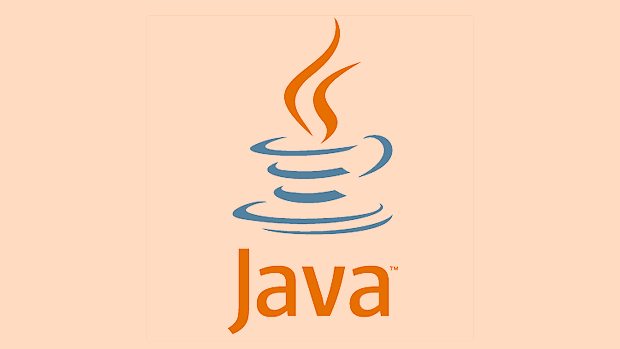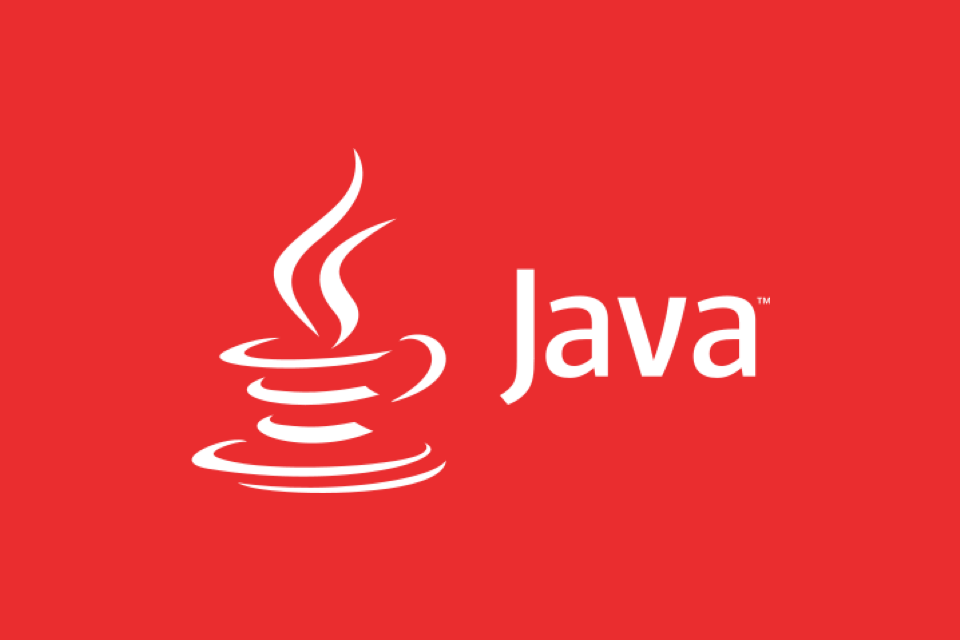To start building an interactive UI using JavaFX, you must first correctly configure the environment and master the basic UI components, layout, event processing, FXML separation design, CSS style and animation effects. 1. When configuring JavaFX projects, if you use Maven, add javafx-controls dependencies; otherwise, manually configure the SDK and set the --module-path and --add-modules running parameters. 2. Create the main class to inherit Application, override the start() method, define Stage, Scene, control (such as Button, Label) and event response (such as setOnAction), and start the application through launch(). 3. Use VBox, HBox, GridPane and other layout managers to organize the interface, and optimize the spacing through setPadding, setVgap and other methods; use getStyleClass() and getStylesheets() to achieve appearance beautification in combination with CSS files. 4. For complex UI, FXML is used to define the interface structure, use fx:id to associate the fields in the controller, inject components through @FXML annotation, and bind event methods to achieve logic and interface separation. 5. Use animation classes such as FadeTransition and TranslateTransition to enhance the user experience, and use Platform.runLater() to ensure that the UI is updated in JavaFX threads, and use property binding (such as bind()) to achieve automatic data synchronization. Finally, it is recommended to start with simple interaction and gradually integrate styles, FXML and animations to create modern desktop applications.

JavaFX is a powerful framework for building rich, interactive user interfaces in Java. Unlike older GUI tools like Swing, JavaFX is designed with modern UI expectations in mind—smooth animations, responsive layouts, and support for CSS styling and FXML for declarative UI design. If you're building desktop applications with engaging visuals and dynamic behavior, JavaFX is a solid choice.

Here's how to get started building interactive UIs with JavaFX effectively.
1. Setting Up a JavaFX Project
Before diving into UI design, ensure your development environment supports JavaFX. Since JavaFX was removed from the JDK after Java 8, you'll need to include it as a separate dependency.

Using Maven:
<dependency>
<groupId>org.openjfx</groupId>
<artifactId>javafx-controls</artifactId>
<version>18</version>
</dependency> Or download the JavaFX SDK and configure it in your IDE (IntelliJ, Eclipse, etc.). Make sure to add the --module-path and --add-modules VM arguments when running your app.

2. Creating a Basic Interactive Window
Every JavaFX application starts with a class that extends Application . The start() method is where you build your UI.
public class InteractiveApp extends Application {
@Override
public void start(Stage primaryStage) {
Button button = new Button("Click Me!");
Label label = new Label("Hello, JavaFX!");
button.setOnAction(e -> label.setText("Button clicked!"));
VBox root = new VBox(10, label, button);
root.setAlignment(Pos.CENTER);
Scene scene = new Scene(root, 300, 200);
primaryStage.setTitle("Interactive UI");
primaryStage.setScene(scene);
primaryStage.show();
}
public static void main(String[] args) {
launch(args);
}
}In this example:
- A
Buttonupdates aLabelwhen clicked. -
VBoxarranges elements vertically with spacing. - The
setOnAction()method attaches event handling—this is central to interactivity.
3. Enhancing UI with Layouts and Styling
JavaFX offers several layout panes ( HBox , VBox , GridPane , BorderPane ) to organize components responsively.
Example: Using GridPane for a Form
GridPane grid = new GridPane();
grid.setPadding(new Insets(10));
grid.setVgap(8);
grid.setHgap(10);
TextField nameField = new TextField();
Button submitBtn = new Button("Submit");
grid.add(new Label("Name:"), 0, 0);
grid.add(nameField, 1, 0);
grid.add(submitBtn, 1, 1);
submitBtn.setOnAction(e -> {
Alert alert = new Alert(Alert.AlertType.INFORMATION);
alert.setContentText("Hello, " nameField.getText() "!");
alert.showAndWait();
});You can also style your UI using CSS:
submitBtn.getStyleClass().add("submit-button");
scene.getStylesheets().add("styles.css"); In styles.css :
.submit-button {
-fx-background-color: #4CAF50;
-fx-text-fill: white;
-fx-font-size: 14px;
}4. Using FXML for Cleaner UI Design
For larger applications, separate UI structure from logic using FXML—a XML-based language for defining layouts.
sample.fxml:
<VBox xmlns="http://javafx.com/javafx" spacing="10" alignment="CENTER">
<TextField fx:id="inputField" promptText="Enter text"/>
<Button text="Say Hello" onAction="#onButtonClick"/>
<Label fx:id="outputLabel"/>
</VBox>Controller class:
public class MainController {
@FXML private TextField inputField;
@FXML private Label outputLabel;
@FXML
private void onButtonClick() {
outputLabel.setText("Hello, " inputField.getText() "!");
}
}Load it in your app:
FXMLLoader loader = new FXMLLoader(getClass().getResource("sample.fxml"));
root = loader.load();
MainController controller = loader.getController();This promotes separation of concerns and makes UI changes easier.
5. Adding Animations and Effects
JavaFX supports smooth animations to improve user experience.
Fade-in animation example:
FadeTransition fade = new FadeTransition(Duration.seconds(1), outputLabel); fade.setFromValue(0.0); fade.setToValue(1.0); fade.play();
Other transitions include TranslateTransition , RotateTransition , and Timeline for complex sequences.
Final Tips
- Always run UI updates on the JavaFX Application Thread . Use
Platform.runLater()for background task callbacks. - Bind properties for automatic UI synchronization:
label.textProperty().bind(inputField.textProperty());
- Use Scene Builder (a visual FXML editor) for drag-and-drop UI design.
Building interactive UIs with JavaFX combines clean structure, event-driven logic, and visual polar. With the right setup and use of layouts, events, FXML, and animations, you can create professional desktop applications that feel modern and responsive.
Basically, start small—button clicks and labels—then layer in styling, FXML, and animations as your app grows.
The above is the detailed content of Building Interactive UIs with JavaFX. For more information, please follow other related articles on the PHP Chinese website!

Hot AI Tools

Undress AI Tool
Undress images for free

Undresser.AI Undress
AI-powered app for creating realistic nude photos

AI Clothes Remover
Online AI tool for removing clothes from photos.

Clothoff.io
AI clothes remover

Video Face Swap
Swap faces in any video effortlessly with our completely free AI face swap tool!

Hot Article

Hot Tools

Notepad++7.3.1
Easy-to-use and free code editor

SublimeText3 Chinese version
Chinese version, very easy to use

Zend Studio 13.0.1
Powerful PHP integrated development environment

Dreamweaver CS6
Visual web development tools

SublimeText3 Mac version
God-level code editing software (SublimeText3)

Hot Topics
 What is the `enum` type in Java?
Jul 02, 2025 am 01:31 AM
What is the `enum` type in Java?
Jul 02, 2025 am 01:31 AM
Enums in Java are special classes that represent fixed number of constant values. 1. Use the enum keyword definition; 2. Each enum value is a public static final instance of the enum type; 3. It can include fields, constructors and methods to add behavior to each constant; 4. It can be used in switch statements, supports direct comparison, and provides built-in methods such as name(), ordinal(), values() and valueOf(); 5. Enumeration can improve the type safety, readability and flexibility of the code, and is suitable for limited collection scenarios such as status codes, colors or week.
 What is the interface segregation principle?
Jul 02, 2025 am 01:24 AM
What is the interface segregation principle?
Jul 02, 2025 am 01:24 AM
Interface Isolation Principle (ISP) requires that clients not rely on unused interfaces. The core is to replace large and complete interfaces with multiple small and refined interfaces. Violations of this principle include: an unimplemented exception was thrown when the class implements an interface, a large number of invalid methods are implemented, and irrelevant functions are forcibly classified into the same interface. Application methods include: dividing interfaces according to common methods, using split interfaces according to clients, and using combinations instead of multi-interface implementations if necessary. For example, split the Machine interfaces containing printing, scanning, and fax methods into Printer, Scanner, and FaxMachine. Rules can be relaxed appropriately when using all methods on small projects or all clients.
 Asynchronous Programming Techniques in Modern Java
Jul 07, 2025 am 02:24 AM
Asynchronous Programming Techniques in Modern Java
Jul 07, 2025 am 02:24 AM
Java supports asynchronous programming including the use of CompletableFuture, responsive streams (such as ProjectReactor), and virtual threads in Java19. 1.CompletableFuture improves code readability and maintenance through chain calls, and supports task orchestration and exception handling; 2. ProjectReactor provides Mono and Flux types to implement responsive programming, with backpressure mechanism and rich operators; 3. Virtual threads reduce concurrency costs, are suitable for I/O-intensive tasks, and are lighter and easier to expand than traditional platform threads. Each method has applicable scenarios, and appropriate tools should be selected according to your needs and mixed models should be avoided to maintain simplicity
 Differences Between Callable and Runnable in Java
Jul 04, 2025 am 02:50 AM
Differences Between Callable and Runnable in Java
Jul 04, 2025 am 02:50 AM
There are three main differences between Callable and Runnable in Java. First, the callable method can return the result, suitable for tasks that need to return values, such as Callable; while the run() method of Runnable has no return value, suitable for tasks that do not need to return, such as logging. Second, Callable allows to throw checked exceptions to facilitate error transmission; while Runnable must handle exceptions internally. Third, Runnable can be directly passed to Thread or ExecutorService, while Callable can only be submitted to ExecutorService and returns the Future object to
 Understanding Java NIO and Its Advantages
Jul 08, 2025 am 02:55 AM
Understanding Java NIO and Its Advantages
Jul 08, 2025 am 02:55 AM
JavaNIO is a new IOAPI introduced by Java 1.4. 1) is aimed at buffers and channels, 2) contains Buffer, Channel and Selector core components, 3) supports non-blocking mode, and 4) handles concurrent connections more efficiently than traditional IO. Its advantages are reflected in: 1) Non-blocking IO reduces thread overhead, 2) Buffer improves data transmission efficiency, 3) Selector realizes multiplexing, and 4) Memory mapping speeds up file reading and writing. Note when using: 1) The flip/clear operation of the Buffer is easy to be confused, 2) Incomplete data needs to be processed manually without blocking, 3) Selector registration must be canceled in time, 4) NIO is not suitable for all scenarios.
 Best Practices for Using Enums in Java
Jul 07, 2025 am 02:35 AM
Best Practices for Using Enums in Java
Jul 07, 2025 am 02:35 AM
In Java, enums are suitable for representing fixed constant sets. Best practices include: 1. Use enum to represent fixed state or options to improve type safety and readability; 2. Add properties and methods to enums to enhance flexibility, such as defining fields, constructors, helper methods, etc.; 3. Use EnumMap and EnumSet to improve performance and type safety because they are more efficient based on arrays; 4. Avoid abuse of enums, such as dynamic values, frequent changes or complex logic scenarios, which should be replaced by other methods. Correct use of enum can improve code quality and reduce errors, but you need to pay attention to its applicable boundaries.
 Exploring Different Synchronization Mechanisms in Java
Jul 04, 2025 am 02:53 AM
Exploring Different Synchronization Mechanisms in Java
Jul 04, 2025 am 02:53 AM
Javaprovidesmultiplesynchronizationtoolsforthreadsafety.1.synchronizedblocksensuremutualexclusionbylockingmethodsorspecificcodesections.2.ReentrantLockoffersadvancedcontrol,includingtryLockandfairnesspolicies.3.Conditionvariablesallowthreadstowaitfor
 How Java ClassLoaders Work Internally
Jul 06, 2025 am 02:53 AM
How Java ClassLoaders Work Internally
Jul 06, 2025 am 02:53 AM
Java's class loading mechanism is implemented through ClassLoader, and its core workflow is divided into three stages: loading, linking and initialization. During the loading phase, ClassLoader dynamically reads the bytecode of the class and creates Class objects; links include verifying the correctness of the class, allocating memory to static variables, and parsing symbol references; initialization performs static code blocks and static variable assignments. Class loading adopts the parent delegation model, and prioritizes the parent class loader to find classes, and try Bootstrap, Extension, and ApplicationClassLoader in turn to ensure that the core class library is safe and avoids duplicate loading. Developers can customize ClassLoader, such as URLClassL






